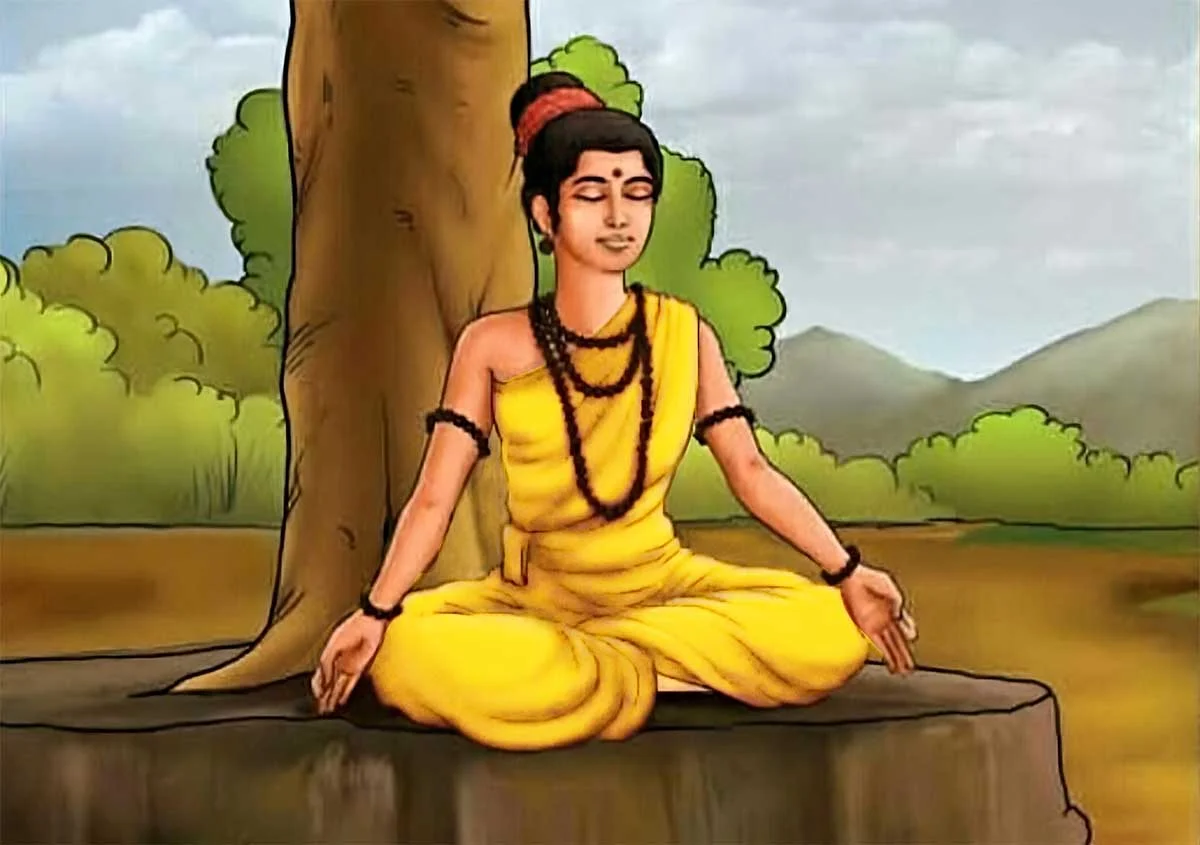
In ancient times there was one very efficient woman called Brahmavadini. She was known for her struggle to survive against all odds. She chose the path of Vedic studies. Brahmavadini exactly means ‘a woman who speaks about Brahman (Parabrahma). The prehistoric philosophical concept of shakti, the feminine principle of energy, admires the immense mental and physical abilities of women.
While many civilizations have seen disappointing history as regards the position of women, we find that Vedas mention the scholarship of educated women like Vaak Ambhrni, Romasa, Gargi, Ghosha, Maitreyi and Lopamudra. During the Vedic times, women were placed high in society. They shared an equal status with their men folk and enjoyed societal sanctions. Indian women were models in maintaining the basic principles of Sanathana Dharma. Brahmavadini was also called as Apala, meaning most beautiful, she was mentioned in the Rig Veda. Apala was a happily married housewife, but then her husband disowned her because she was suffering from an incurable skin disease.
She had no other option than going back to her father, Apala vowed to find a cure for herself. Using a required ritual and the leaves of the Soma plant, she prayed to Lord Indra. Her desire was so ardent and her prayers so genuine that it forced the king of gods to descend upon earth and bless Apala. She was cured of her disease and once again regained her former glow and radiance, giving justice to her name Apala, the most beautiful. She was most expressive among all Brahmavadinis women who studied Vedic texts.
Mythology mentions that God created Satarupa, the first woman, to bear and nurture the human race. Similarly, as Adishakti (Devi Durga), a woman manifested the combined strength of all the gods to destroy demon king Mahisasura. This reverence for women was also reflected in societal norms. During the Rig Vedic period, women were allowed to pursue education and had the liberty to practice specific rituals, study the scriptures and even choose their own husbands. The hymns of Rig Veda are replete with praises of several eminent female poets, princesses, sages and merchants. Even today, many orthodox Hindus begin their day by reciting the names of five mythological women—Ahalya, Draupadi, Tara, Kunti and Mandodari.
According to the Śivapurāṇa 2.3.30 The Celebration of Pārvatī’s Return, Brahmā narrated to Nārada: “On hearing that Pārvatī was returning, Menā and Himavat excessively delighted went ahead seated in a divine vehicle. The auspicious water-pot was placed in the main highway decorated with sandal paste, aguru, musk and branches of trees with fruits. The priests, Brahmins and sages reciting the Vedas (brahmavādin), dancing girls, all went ahead seated on lofty elephants to receive her. All round stumps of plantain trees were fixed. According to Monier-Williams’s Sanskrit-English Dictionary, “brahmavādín” means ‘discoursing on sacred texts, a defender or expounder of the Veda, one who asserts that all things are to be identified with Brahman’. It doesn’t mean “one who speaks like God.”
Brahmavadini alias Apala was a saint mentioned in the eighth mandala of the Rig Veda Samhita. She is also mentioned in the Satyayana Brahmana. It is believed that Apala is the daughter of Sage Atri. In That era the parents had acceptance for their daughters, when Krshasava abandoned her, it was Atri Muni who inspired his daughter to live with divinity and self-confidence. Himalaya is a place which is blessed with herbs and medicines. It used to be considered as a medicinal hub; even Rudra resorted to Himalaya for peace and rumination. Atri Muni and Anusuya inspired their daughter to understand the healing abilities of mountain plants. Perhaps this was the place where Brahmavadini alias Apala did a lot of tapasya and could find medicine for her skin. Her skin disease was very acute and she was looking awful and fragile. Her aged skin and incurable patches made her husband to detach from her. When she reached Himalaya, the mythology says she not only looked beautiful but found a medicinal cure of many illnesses. She was curing people and also did research on those herbs around her. She is believed to have offered the juice of somalata plant to Indra when she appeared before her. It is believed that Apala asked for three boons – one to transform the barren field of her father into fertile land, cure for her father’s baldness and a cure to her skin disease. Indra grants all the three boons.
To eradicate her skin disease Indra cleanses, her thrice – first her human body, next her vital breathing and finally her soul. After this ritual Apala transforms into a most beautiful woman, her story is found in the Sukta 91 of the 18th mandala of the Rig Veda. Seven mantras here dedicated to Indra were chanted by Apala. In Hindu religion we have beliefs that if someone wants to heal their skin and hair they should recite these mantras, and while reciting these mantras if you happen to be in the Himalayas, you can transform yourself into the most beautiful human. It is also believed that the people staying in Himalayan region don’t age fast and they look evergreen because this place has medicine and divine energies.

